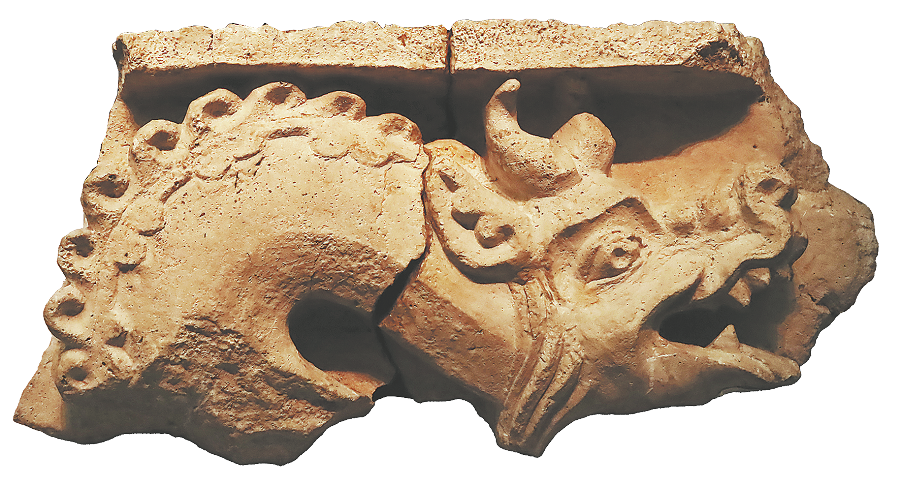
A dragon head bas-relief of the eighth century, from the State Museum of History of Uzbekistan. JIANG DONG/CHINA DAILY
The mutual influences among different cultures are sometimes preserved in inconspicuous details, if not told or paid great attention to.
In the Islamabad Museum in Pakistan sits a red sandstone quern dated between the second century BC and the second century AD. It holds flower and leaf patterns on its surface and a carved animal motif on one side of its pedestal.
"You think it's a fish, but take a closer, longer look. It has a dragon head," says Wang Zhiqiang, a scholar at the National Museum of China, where the quern is on display. "According to our counterparts in Islamabad, it incorporates the image of the Chinese dragon, which was introduced via the ancient Silk Road."
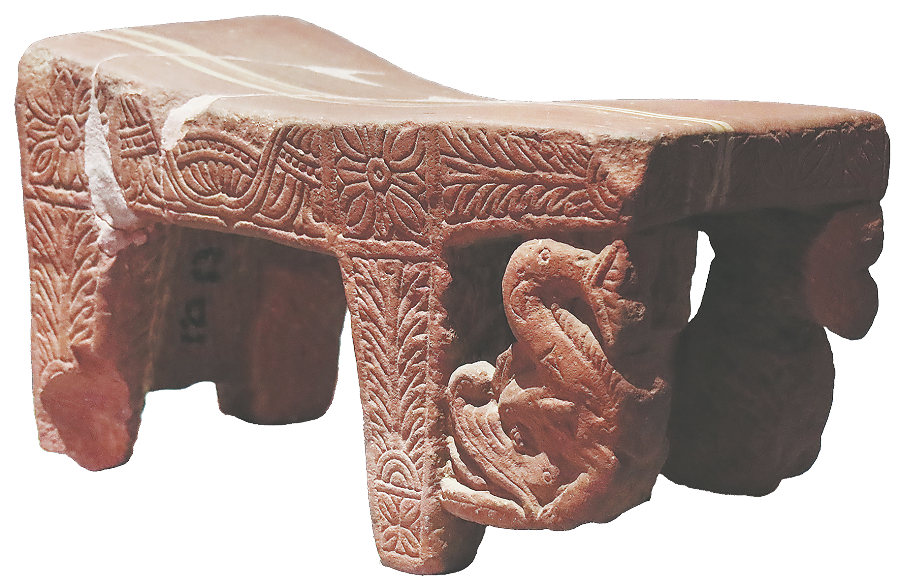
A quern with a dragon-face fish from the Islamabad Museum in Pakistan. JIANG DONG/CHINA DAILY
This quern, with its dragon-faced fish, is one of the over 220 cultural objects displayed in the exhibition Where Civilizations Meet: Collections from Museums of the Shanghai Cooperation Organization Member States at the National Museum of China.
The objects come from the collections of 10 museums and cultural institutions of Shanghai Cooperation Organization member states to celebrate the diverse cultures that are thriving on the vast, fertile Eurasian soil, says Wang, the exhibition's curator.
The exhibition opened on Aug 27, ahead of the SCO Summit 2025 held in Tianjin on Aug 31 and Monday, and will run until Nov 16.
The SCO, a permanent intergovernmental international organization, was announced in Shanghai in 2001. Upholding the Shanghai Spirit, it pursues the principles of mutual trust, mutual benefit, equality, consultation, respect for diversity of civilizations and pursuit of common development.
The Where Civilizations Meet exhibition addresses the Shanghai Spirit's two pursuits — cultural diversity and common development — and includes representative objects that illuminate the ancient civilizations and highlight mutual influences among the member states.
"The exhibits span from the prehistoric period to the early 20th century, telling a brief history of each member state on show," Wang says.
Also at the exhibition is a dragonhead bas-relief from the eighth century, speculated to be an architectural component, from the collection of the State Museum of History of Uzbekistan. Its teeth are visible from the open mouth, and it has several curved horns on its head.
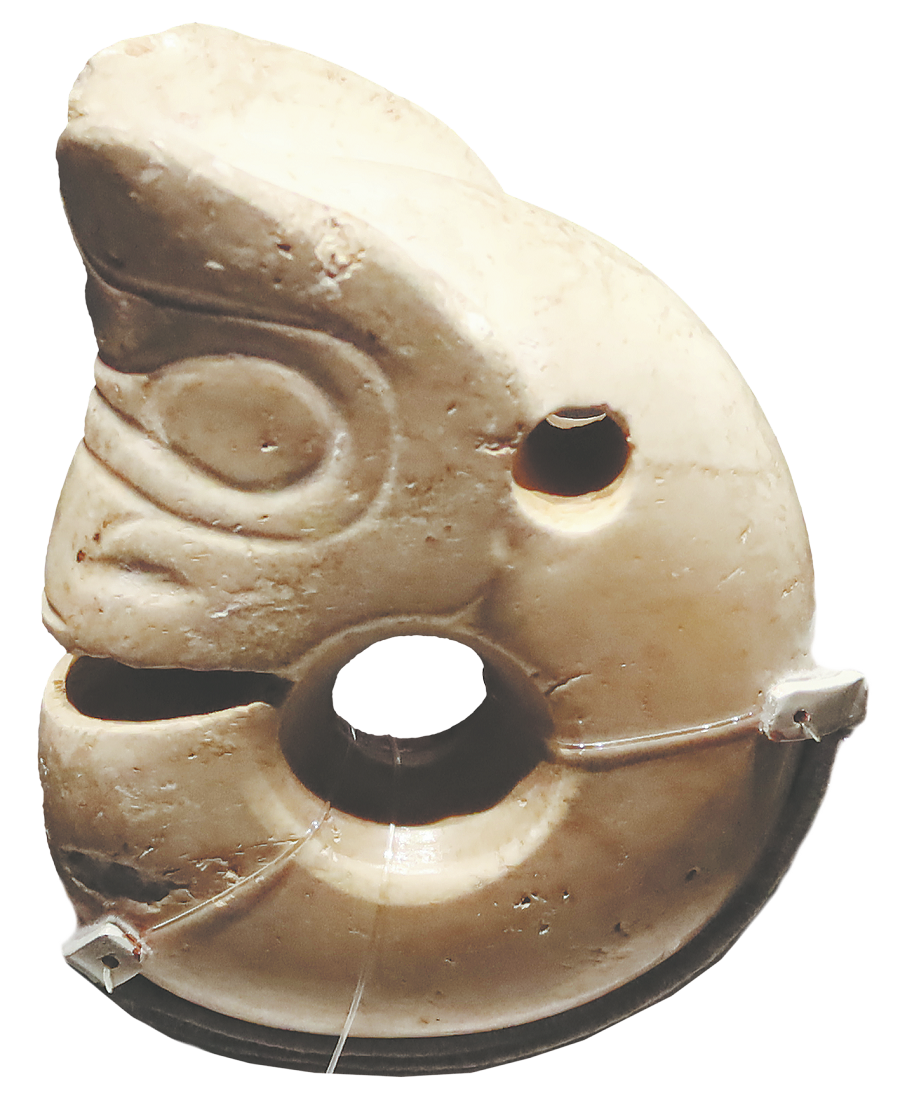
A jade pig-dragon belongs to the Neolithic Hongshan culture, one of the earliest known jade carvings in the shape of a dragon in China. JIANG DONG/CHINA DAILY
To complement the two dragons from afar, the National Museum of China displays a jade pig-dragon belonging to the Neolithic Hongshan culture dating back more than 5,000 years. It has a pig's head and a dragon's body to symbolize the fertility of farmland. The object is believed to be one of the country's earliest known jade carvings shaped like a dragon.
The communication between China and other ancient civilizations is vividly celebrated on the yellow-brown patterned surface of a Tang Dynasty (618-907) ceramic bowl. The ware is believed to be a product of the Changsha kiln that reached its firing climax in the middle to late Tang Dynasty.
The bowl is patterned with relief date palms, which suggests it was one of a great number of wares ordered by overseas customers, says Wang.
Changsha kiln products were among the export commodities transported to other parts of Asia and Africa. Wang says: "Over 80 percent of ceramics found at the Batu Hitam (black rock) Shipwreck, off the shores of Sumatra and discovered in 1998, were from the Changsha kiln." The inscription on one bowl dates the cargo ship to the Tang era.
Wang says the Changsha kiln-fired bowl testifies to the Tang's prosperity and it embraced openness and extensive exchanges with other cultures.
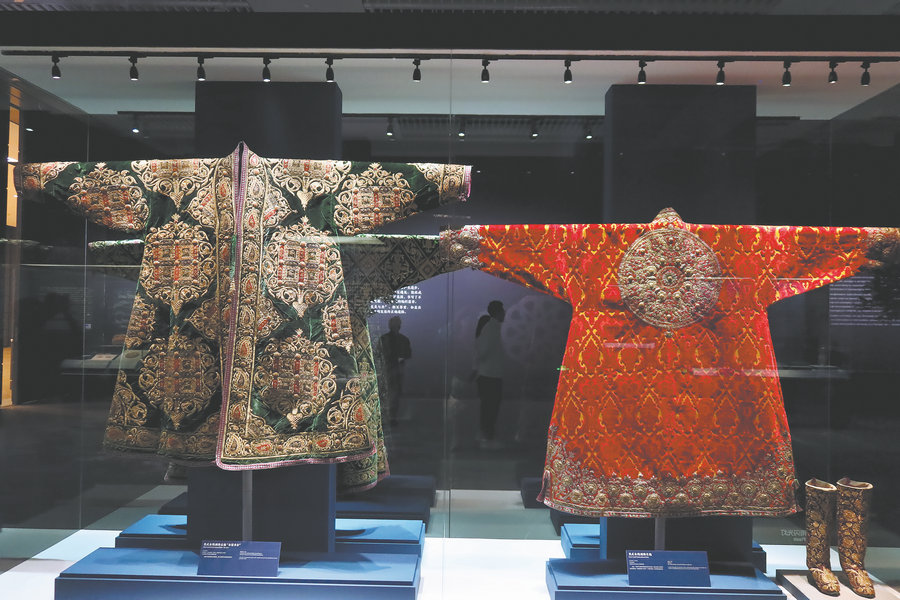
Costumes from Uzbekistan on show. Collections from both the State Museum of History of Uzbekistan and the State Museum of Arts of Uzbekistan are on display at the Beijing exhibition. JIANG DONG/CHINA DAILY
Ibrahimzoda Zafarsho Safo, director of the National Museum of Tajikistan, says the museum brings 24 artifacts to the Beijing exhibition, including gold and copper wares, musical instruments, stones with inscriptions and pottery, to testify to the country's role in the communications between the East and the West along the ancient Silk Road, as well as various ancient cultural influences in the country.
One of those who witnessed the exchange was Xuan Zang, a Tang Buddhist monk, who was believed to have reached Central Asia in 630. In his work Datang Xiyu Ji (Records of the Western Regions of the Great Tang), Xuan Zang mentioned the Sogdians — ancestors of the Tajik people — along with their language, traditions and customs.
The Tajikistan section displays a stone with a Sogdian inscription dating between the seventh and eighth centuries. The writing was done with black ink, in three lines. The elegant style indicates that it was created by a professional scribe, according to Safo, and exhibits a well-developed writing system by the Sogdians at the time.
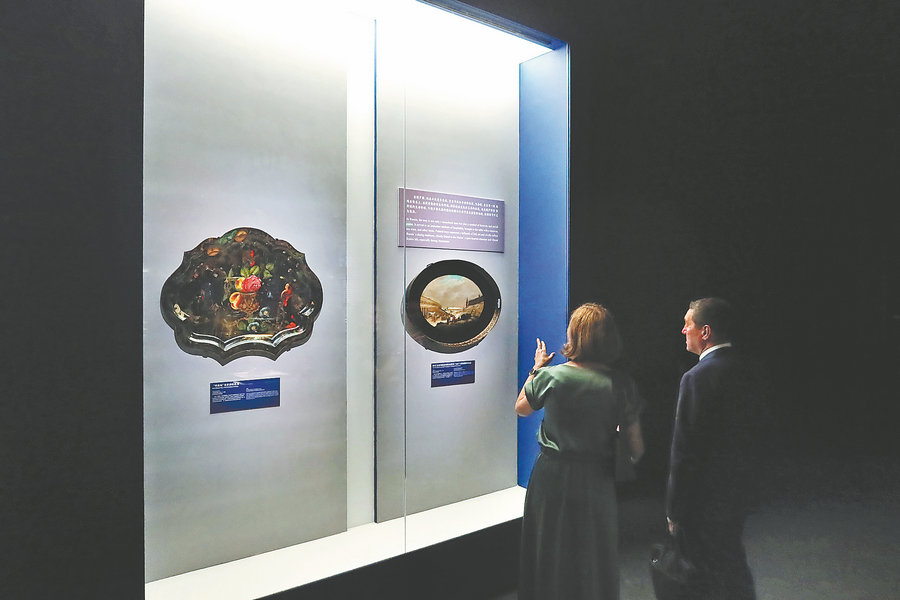
Plates with rich decorative motifs from the State Historical Museum, Russia, on show at the National Museum of China. JIANG DONG/CHINA DAILY
Another object of interest is a lamp component, on which the bottom depicts Buddha heads. It was traced to the second and third centuries during the Kushan Empire (1st — 3rd centuries), reflecting the spread of Buddhism in the multicultural territory.
Safo says the objects show that the Silk Road was "not only a network of routes for trading, but it also connected people via culture, arts and religions" — that is, "a diversity of cultures on one major road".
Eldar Ianibekov, deputy director of the State Historical Museum located in Moscow's Red Square, says that as one of the largest museums in Russia, it is exhibiting a selection of treasures at the Beijing museum from a collection of over 5 million objects that represent the unique features of Russian culture.
He says the artifacts on display "span from the seventh century BC to the 19th century, parts of which focus on nomadic tribes and others that unveil the glorious royal court life and timeless aesthetics".
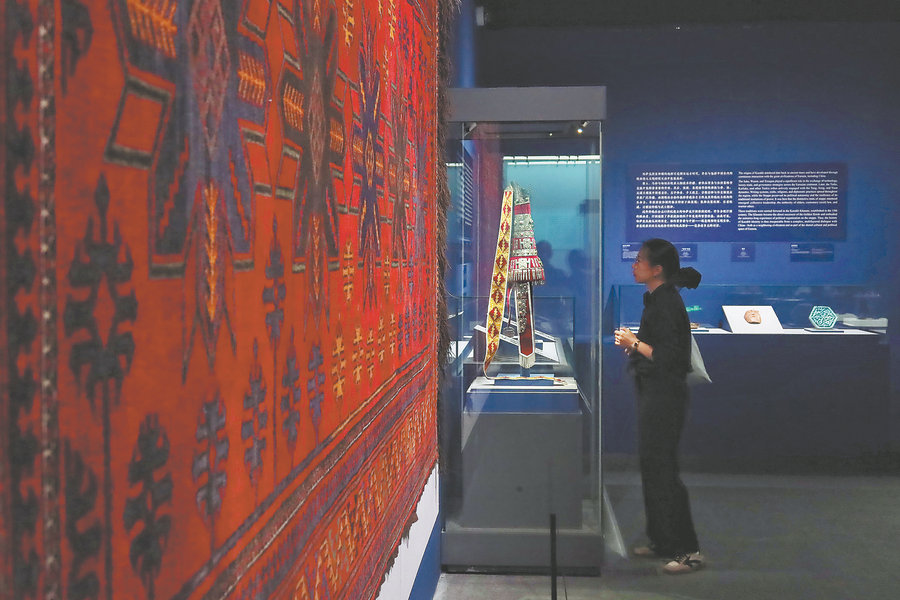
Also on show are textiles from the National Museum of the Republic of Kazakhstan. JIANG DONG/CHINA DAILY
Over the years, Russian works of art and crafts have been shown at the National Museum of China in various themed exhibitions. The Russian Banquet, a four-month-long exhibition that opened in November 2024, offered a glimpse into the gastronomic artistry and customs at royal palaces and grassroots households, by showing dinning apparatuses from the collection of Moscow Kremlin Museums. Ilya Repin: Encyclopedia of Russian Life, an exhibition of the life and art of the great painter, is ongoing at the Beijing museum.
Safo, of the National Museum of Tajikistan, adds that presenting the unique, historic cultural features of different civilizations in one place offers a great opportunity to bring the SCO member states and partners closer to better understanding each other.
 Editor:Qiu Xiaochen
Editor:Qiu Xiaochen